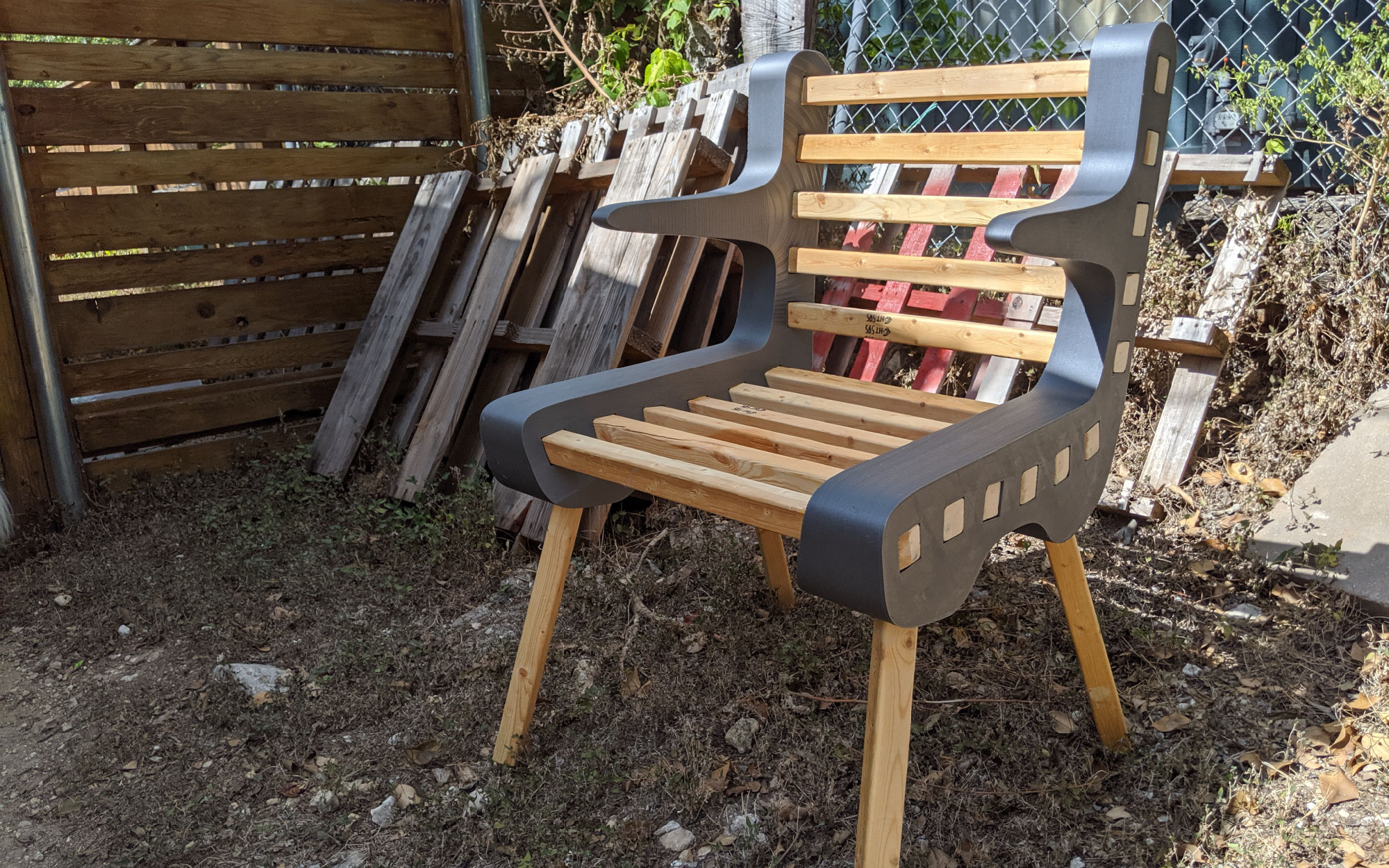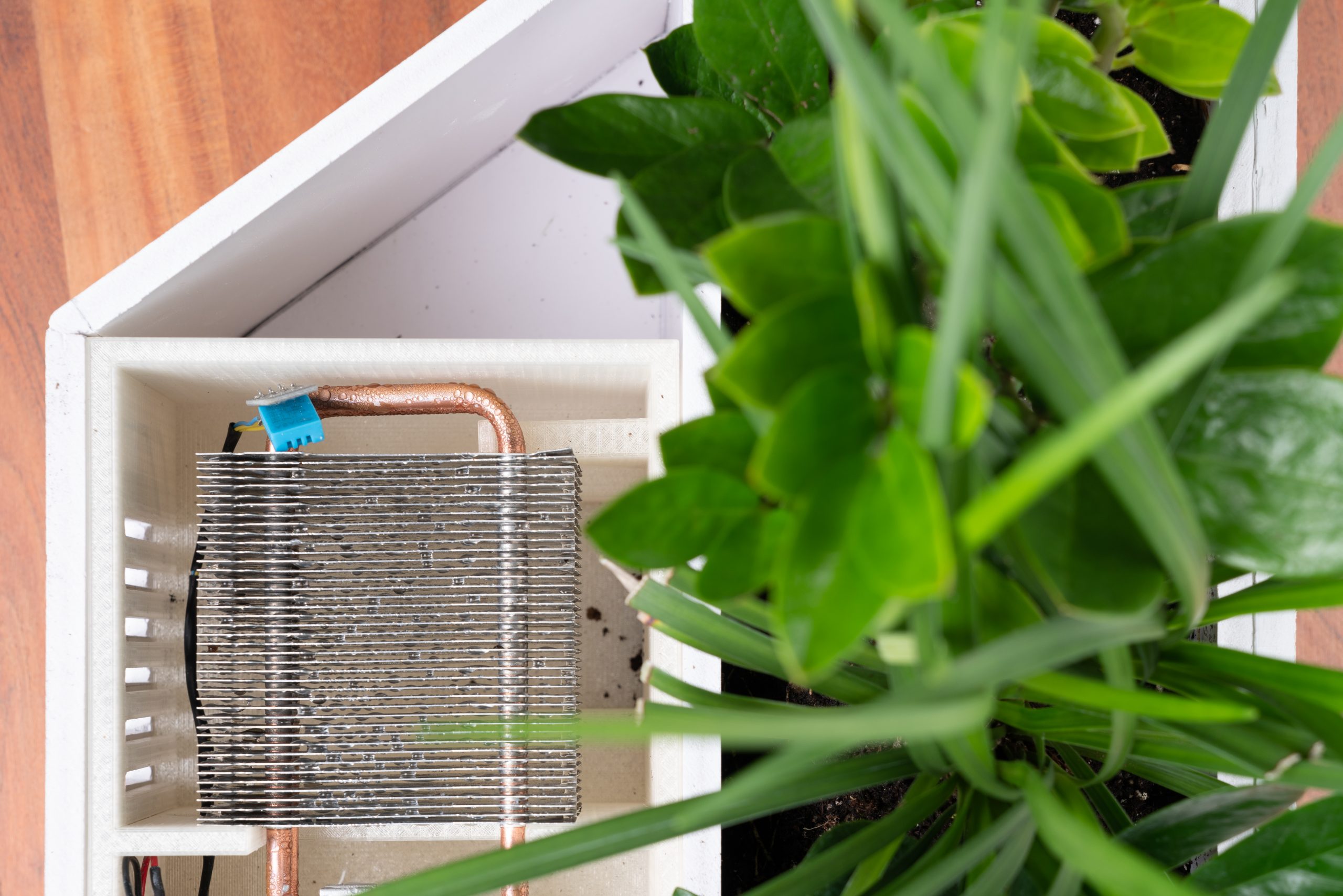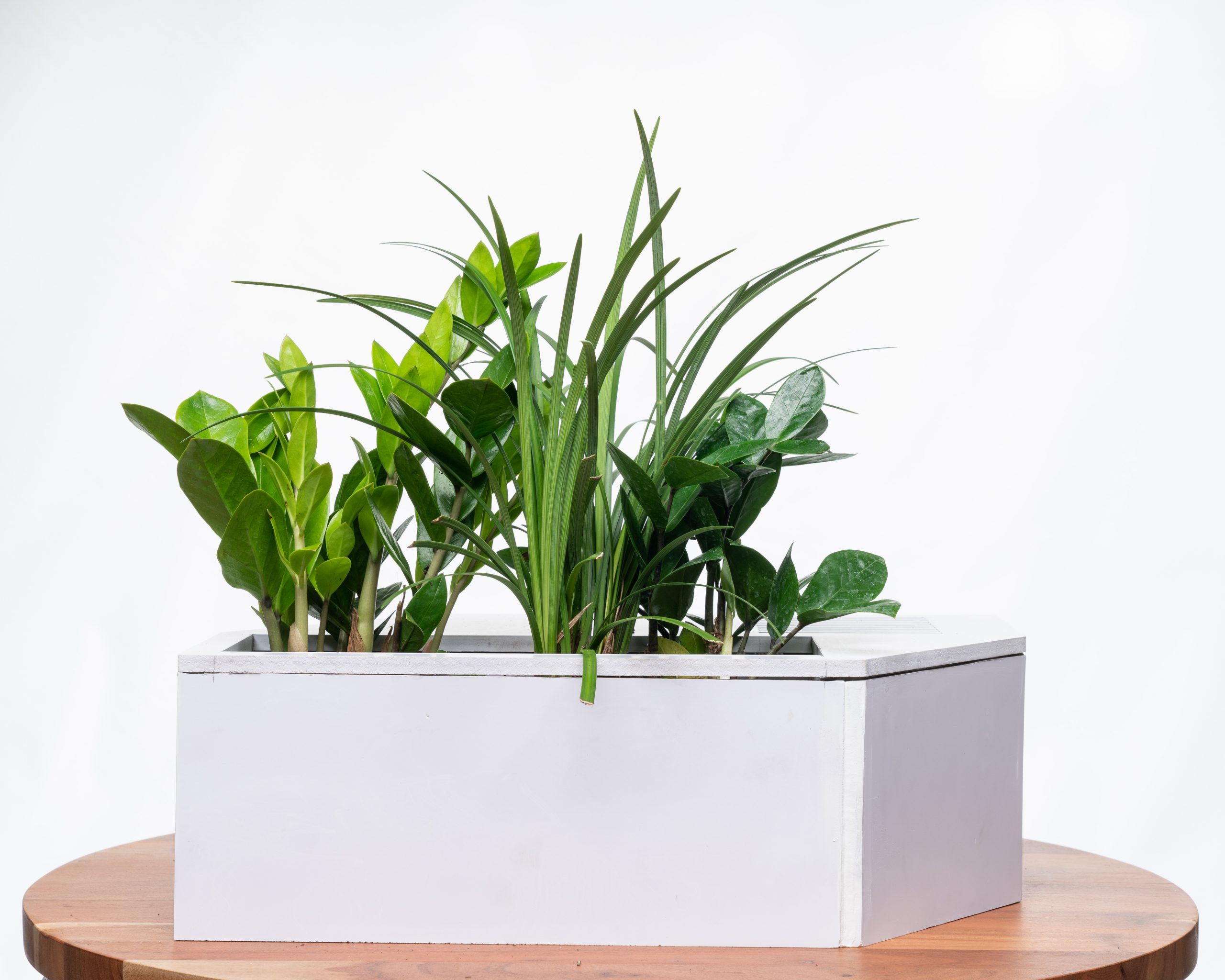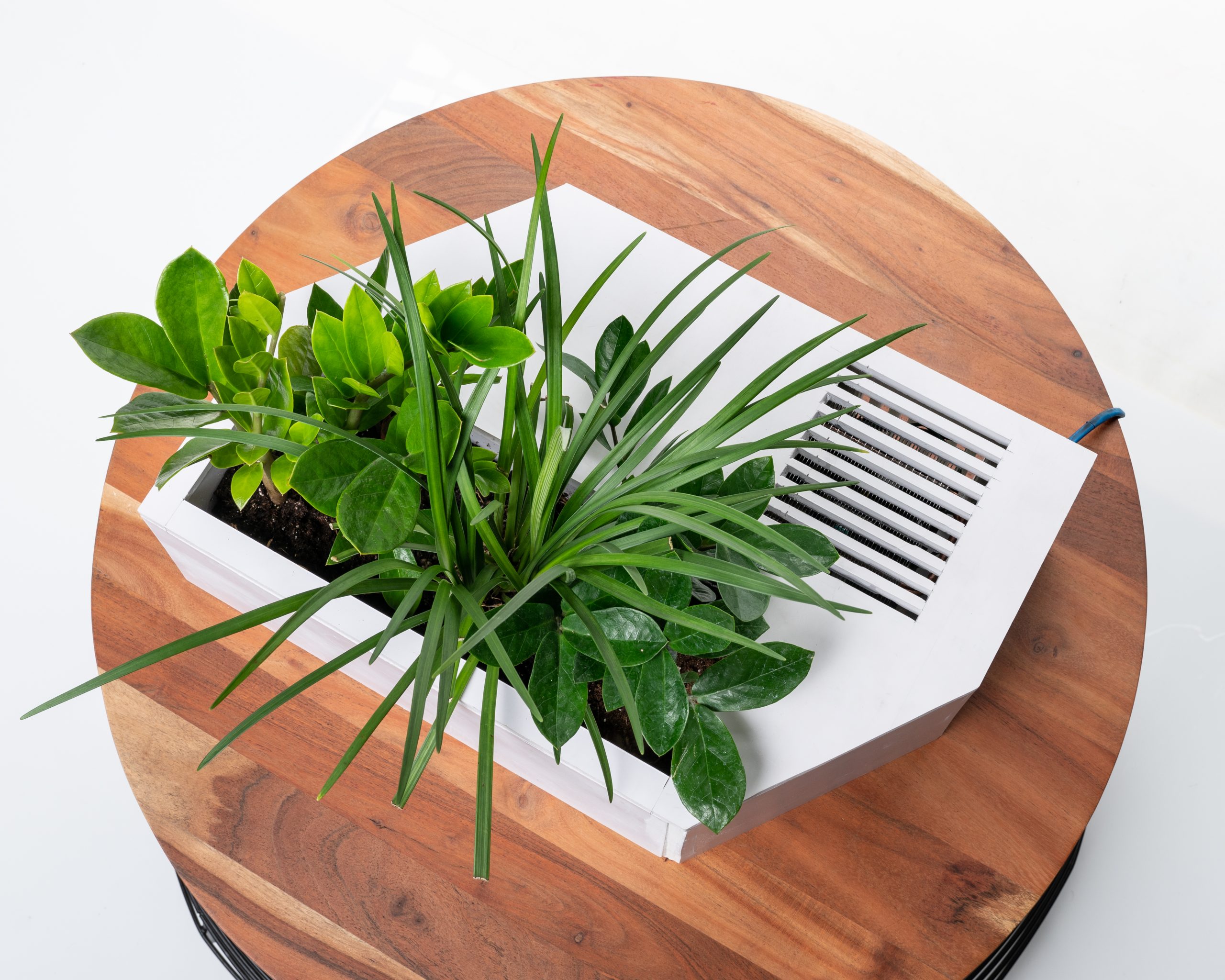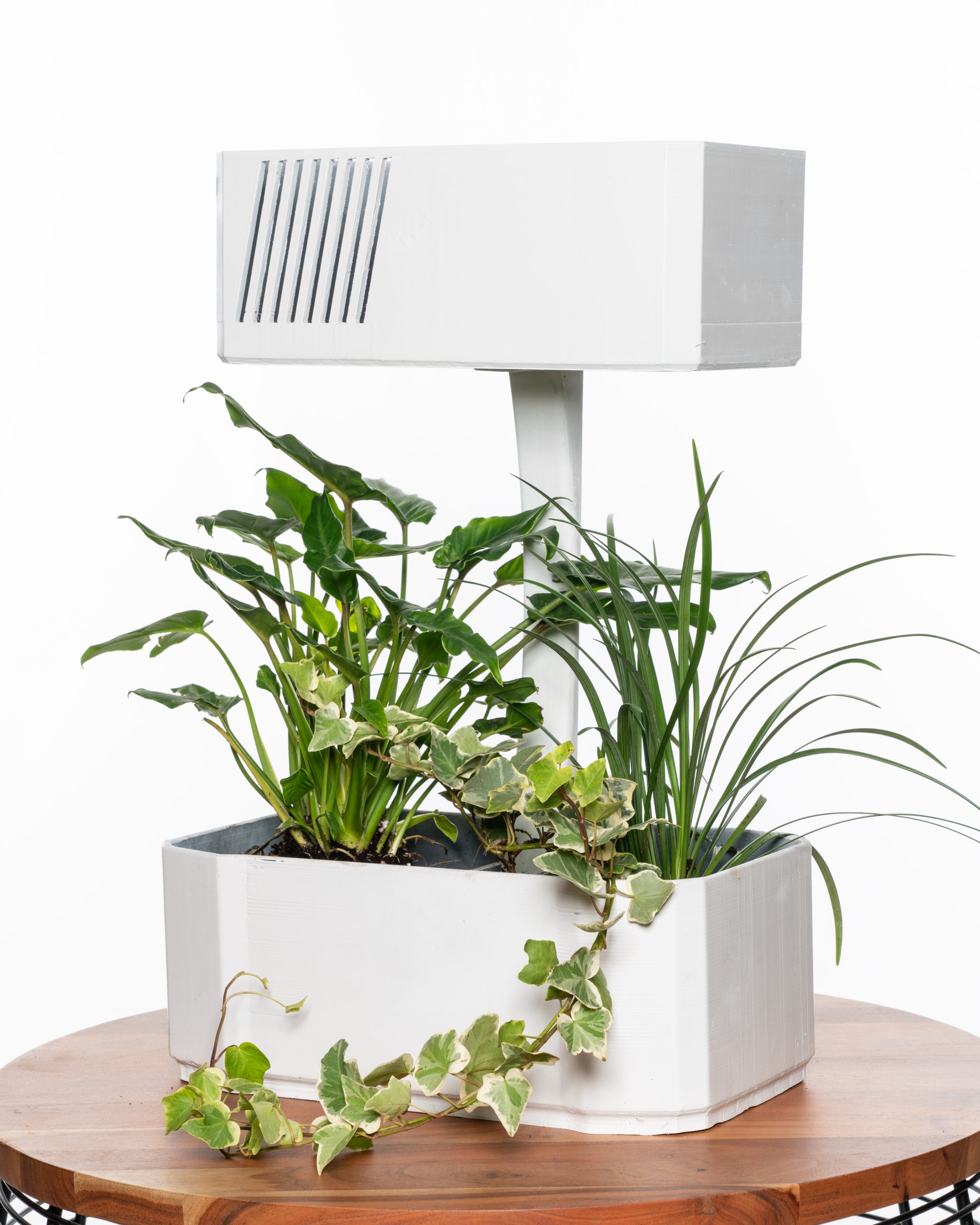The dream has been the same, since the beginning of re:3D, to create a 3D printer that could print from trash. There was a problem though, first we had to create a printer (the Gigabot), and then we had to figure out a way to print directly from plastic waste (Gigabot X).
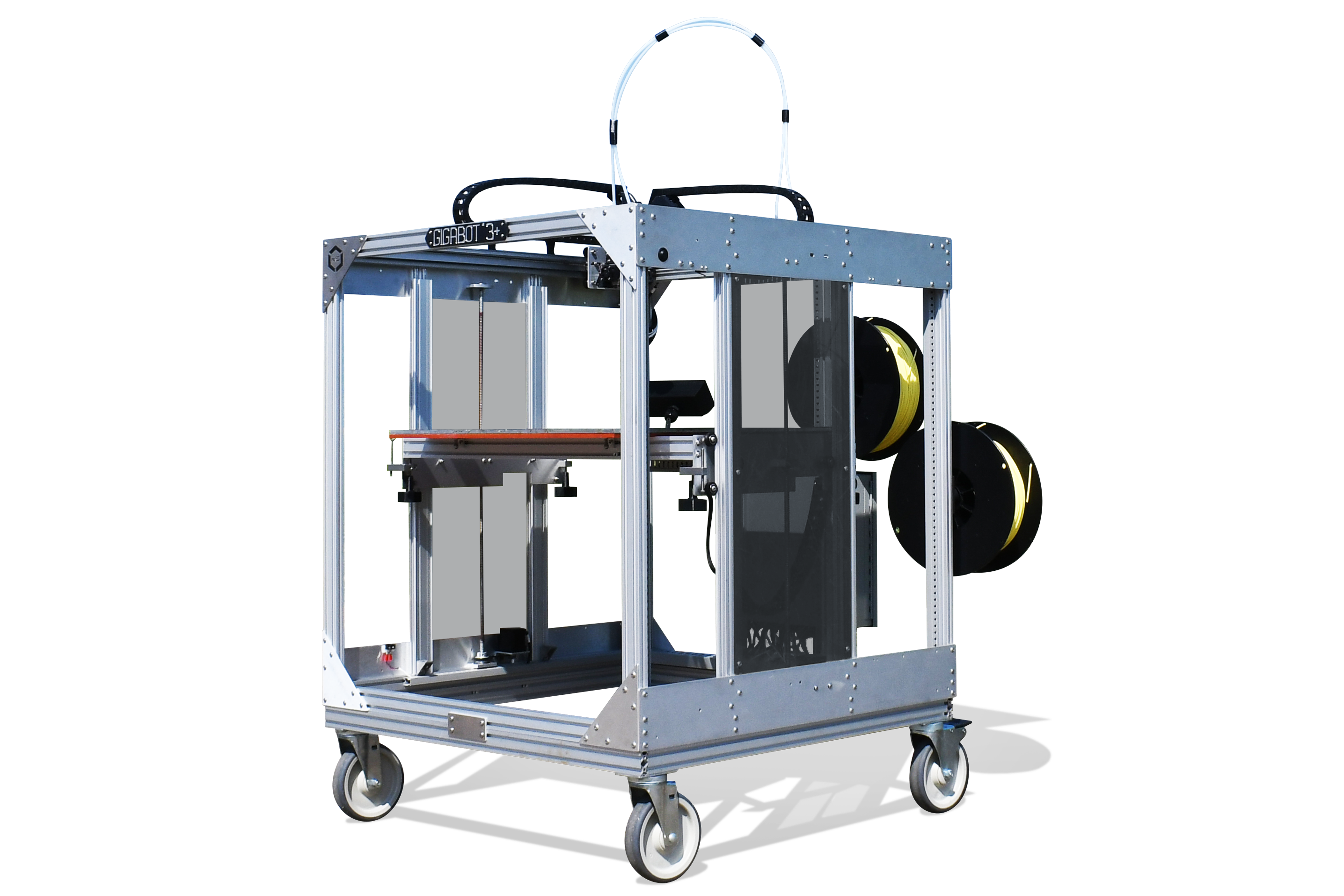
So the first part of the dream was to create a large-scale, industrial 3D printer that was open-source and affordable, which is just what we did. The creation and sales of Gigabot has allowed re:3D to become a viable, profitable company. However, as a boot-strapped startup, finding more money, especially for R&D hardware projects was always difficult. But we never stopped believing that we could do it.
Two years ago we had the perfect opportunity to finally fund the creation of our Gigabot X 3D printer. The first was the WeWork Creator Awards, which awarded us the ability to expand our team, our facilities, and our R&D budget. The second was a Phase I SBIR (small business innovation research) grant from the National Science Foundation (NSF). The NSF grant was specifically for the creation of a 3D printer that could print from plastic waste. Subsequently we have received a Phase II award for this project to continue to develop an entire ecosystem to grind, dry, and feed plastic waste into the Gigabot X (GBX) printer that was developed as part of the Phase I grant. The dream was alive! The GBX was real!
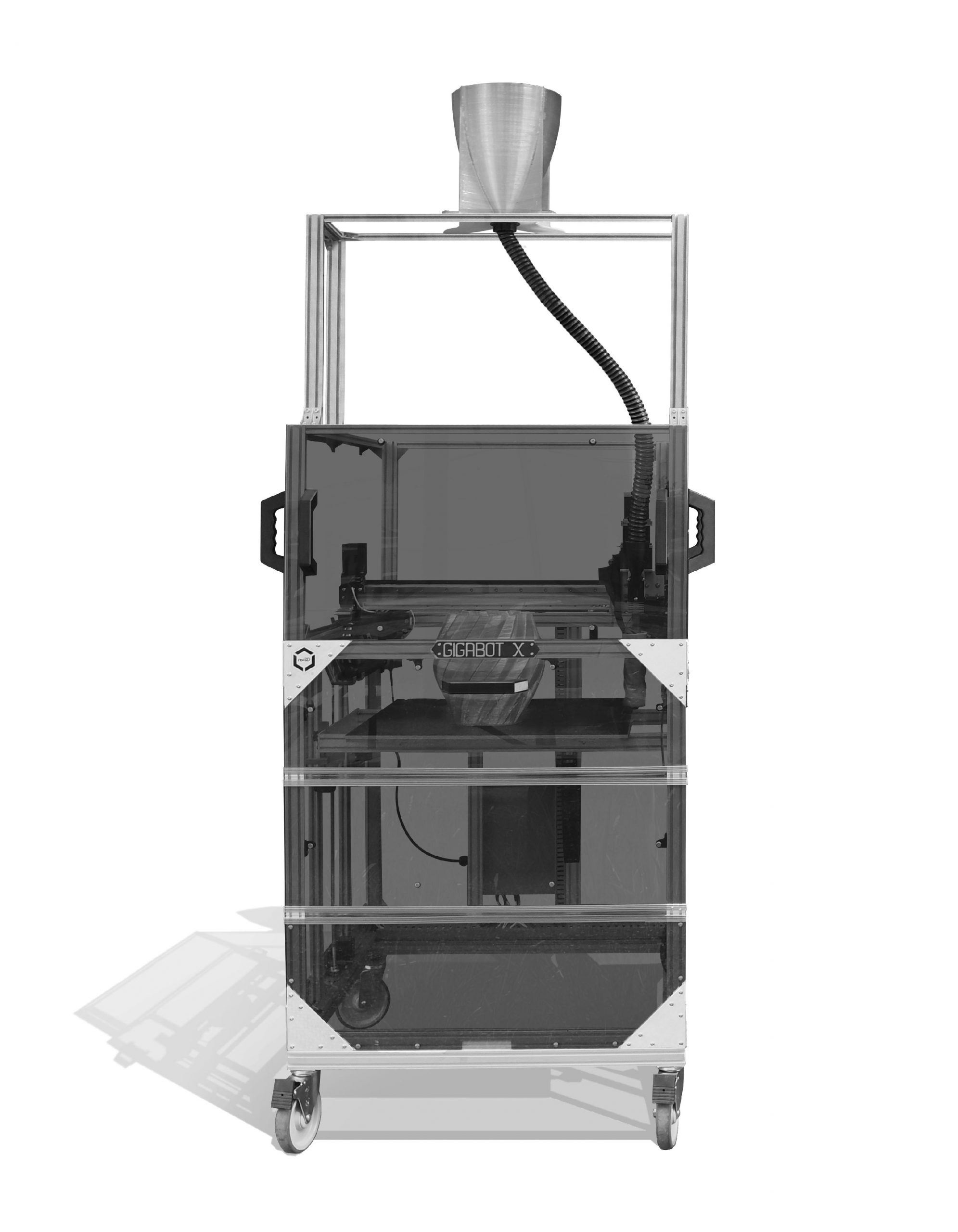
Reverse Pitch:
Each year, the City of Austin, and specifically the Austin Resource Recovery department hosts an event called Reverse Pitch. Reverse Pitch is unique because it looks for companies within the Austin community who are creating waste that could be put to use in other areas or other businesses. The event starts with the Reverse Pitch, where the companies who are creating waste, pitch their product (trash) to businesses, entrepreneurs, or anyone interested. They talk about the quantities, the types of waste being produced, and any other pertinent information that might be useful.
Next, those who are interested in using one or more of the pitched waste-streams, put together a presentation and create a business model/use case around either creating or augmenting their business using the waste.
This past year one of the companies, HID Global, was pitching plastic polycarbonate (PC) sheets. They were the result of creating ID cards in their factory, and they were producing it in staggering amounts. The challenge was to figure out what we could do with it. I had the opportunity to go up to North Austin and tour the HID Global facility (which is amazing!) and see the process, meet the people, and get to know the waste-stream and company a little bit better. It is really amazing that this billion dollar company would be so warm and welcoming.
PC is a very common 3D printing feedstock. Our filament printing Gigabot prints with PC on a regular basis, in fact we use PC printed parts in all of our Gigabot printers. So I knew that it would be possible to print with this waste stream. Next, the entire process for HID to create their ID cards is done in a ‘clean-room’ environment, so we knew that the waste was extremely clean – another advantage because dirt can cause clogs and other issues in the printing process.
I made the pitch for a line of furniture, home goods, and art pieces to be printed on GBX directly from the HID PC waste. It was an idea that I called, Design: by re:3D. And, we WON! It was extremely exciting to win the pitch competition, and we received $10,000 to jump-start the idea (You can see the video here).
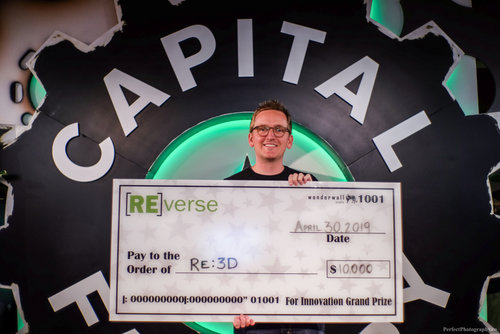
But then the joy turned into nervousness – we needed to divert 2,000 lbs of HID PC from the landfill, and quickly! What were we going to do with all of this stuff?
Serendipitously enough, one of the judges for the Reverse Pitch just so happened to work at the Austin Habitat for Humanity ReStore. We struck up a conversation after the competition, and set up a meeting with their team to discuss the idea of turning trash into treasure, and then selling it at the ReStore.
Talk about a dream scenario!

It has been a lot of work to get to this point, almost a year later! The ReStore allowed us to install a small industrial grinder in their back room, and allowed us to send interns over to spend HOURS grinding away at the 2,000lbs of PC that we had picked-up from HID.
We are so excited to announce that the first pieces of furniture are being displayed and put up for silent auction at the ReStore today! These pieces have been printed from waste plastic, this first batch is from plastic water bottles specifically. As we progress with our technology, and hone in our printer settings we are confident that we will be able to print objects from the diverted PC. We have successfully printed small vases and other objects, and we are going to be moving up to furniture shortly.

We are really looking forward to growing our relationship with the Habitat ReStore. And we are so thankful for the continued support from the City of Austin, the Austin Technology Incubator (ATI), and all of the many many more people who have believed in our story and helped us along the way. We look forward to continuing this work, diverting more trash from the landfill, and growing our business and team here in Texas.
On designing this collection:
By Mike Battaglia
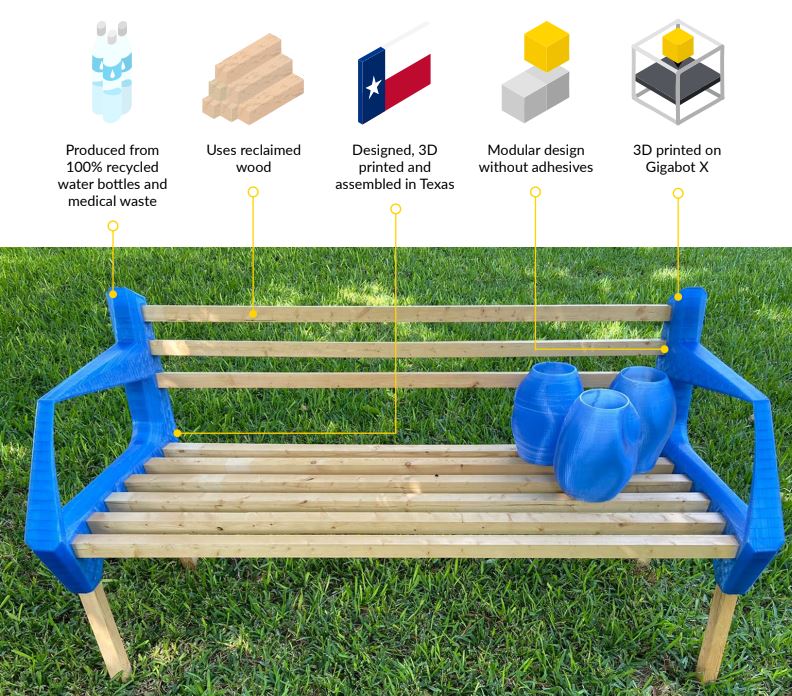
When looking around reStore, I was looking for something that would usually be in stock and was an easy shape to design around. For my first piece I settled to design around 2x2s after seeing a bench outside made entirely of them.
The first design relied on glue to keep it together and I ultimately decided that this wasn’t sustainable. To complete the loop, I wanted the chair to be able to be disassembled, ground up, and turned into new feedstock for GBX. The second design had screw holes so that the 2x2s could be fastened and removed/disassembled. I definitely prefer this design but have already moved on to other ideas that will be even easier to assemble.
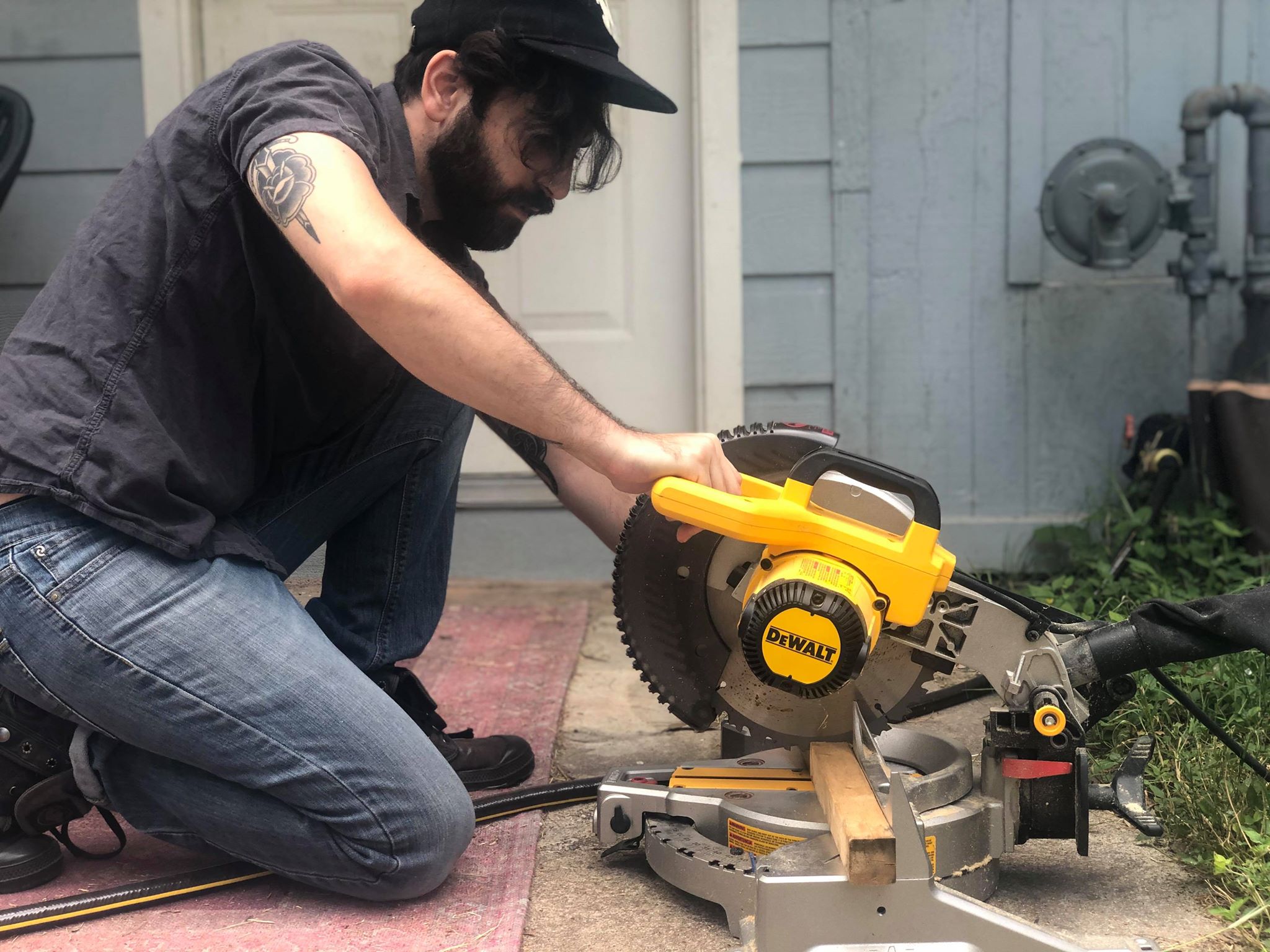
Designing for GBX requires adding a little bit more tolerance than you would for a regular print. The layers are larger and slightly less consistent. I learned the hard way when realizing that the tolerance I had designed in was not enough, and had to plane down each piece of wood to fit.
Currently I am experimenting with 3D printed molds for pouring reclaimed cement+polycarbonate scrap into to create side tables.
Check out a quick video about the furniture:
What do you think we should make next? Email: info@re3d.org and let us know!
Mike Strong
Blog Post Author
